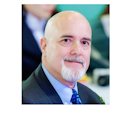In honor of this themed "Top 10" issue, here's a list of the top 10 stories that affected green cleaning in schools and universities in 2010:
1. Green Cleaning Award for Schools & Universities. The winners are being recognized in this issue, so it is appropriate to start here. Congratulations to all the nominees; the real winners are the students and staff, as they truly are the beneficiaries of great programs that are improving even with budgetary and other challenges.
2. State legislation on green cleaning in schools. Legislation requiring green cleaning in schools has been passed in several more states, bringing the total number to nine — and more are on the horizon in 2011. The model legislation is being improved by adding requirements for appropriate and effective training. And some legislation is adding measurement to help ensure that schools not only are using green products properly, but also are creating more healthful buildings.
3. FTC Environmental Marketing Guidelines. The Federal Trade Commission (FTC) has released revisions to its Environmental Marketing Guidelines. The original guide released in 1992 covered only the basics, such as biodegradable, compostable and recyclable. The revised guidelines include more terms and clarify others, and have come at a time when green advertising claims are skyrocketing. The FTC guidelines will help clarify marketing claims, which in turn will enable purchasers to buy with greater confidence.
4. Trade associations support green. Industry trade associations have bolstered their support for the green cleaning movement. For example, ISSA (International Sanitary Supply Association) and CSPA (Consumer Specialty Products Association) collaborated with the Healthy Schools Campaign and the Green Cleaning Network to help pass legislation on green cleaning in schools.
5. Integrated Cleaning and Measurement (ICM). Progress is being made that will use inexpensive analytical devices to measure cleanliness. This has the potential to help focus limited resources of labor and products on the places that really protect health, rather than the traditional task and frequency approach to cleaning.
6. Sustainability: measuring and reporting. Now that most have bought into green cleaning, many are taking the next step by considering how they can become more sustainable. And a big part of sustainability is the ability to measure and report results.
7. Labor and environmental groups. Labor unions such as the Service Employees International Union (SEIU) and environmental groups such as the Sierra Club increased their interest in green cleaning. The unions are looking to leverage the green cleaning movement to improve training, and environmental groups are focused on issues such as the full disclosure of ingredients in chemical cleaning products.
8. Environmental labeling. The year saw a proliferation of eco-labels, but the most exciting is ISSA's partnership with EcoForm. This program will standardize reporting of health, environmental and other important indicators and enable innovative products to show what makes them special.
9. Revising the USGBC's LEED Rating System for Existing Buildings. The USGBC released its proposed revisions to the LEED Rating System for Existing Buildings: Operations & Maintenance (LEED-EB: OM). LEED continued to be a driver of the green cleaning movement; more than 42,000 buildings are in its various programs.
10. Acquisition of TerraChoice by Underwriters Laboratories. Organizations such as Green Seal have played a pivotal role in green cleaning, but these organizations typically have been small. This changed with the acquisition of TerraChoice by Underwriters Laboratories (UL), a billion-dollar standard-setter and certifier. The sheer size of UL will provide resources and opportunities that have never been seen before. This is a game-changer.
Ashkin is executive director of the Green Cleaning Network, a 501(c)3 not-for-profit educational organization. [email protected]
About the Author

Stephen Ashkin
Executive Director
Ashkin operates the Green Cleaning Network, a 501(c)3 not-for-profit educational organization.